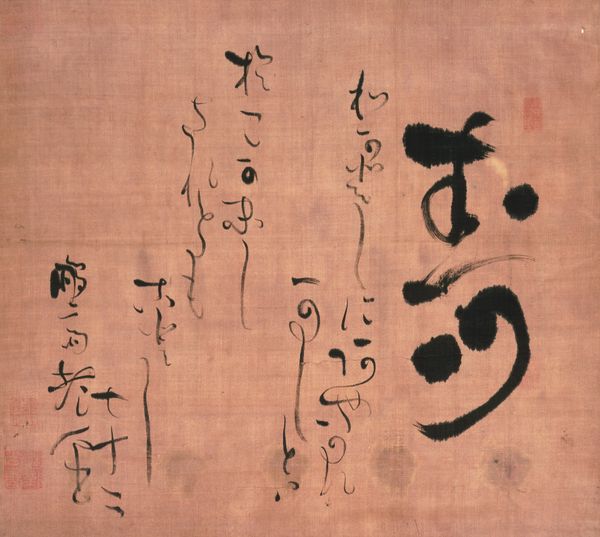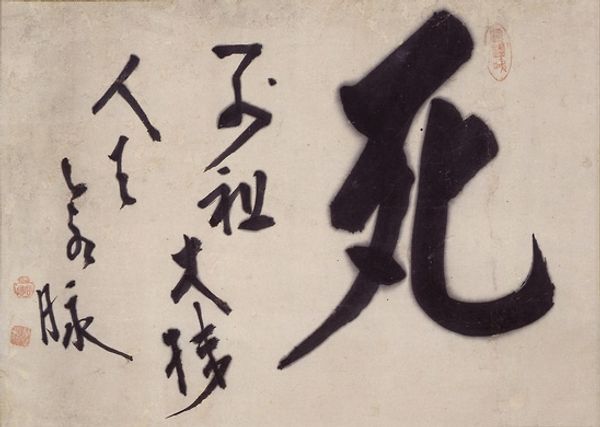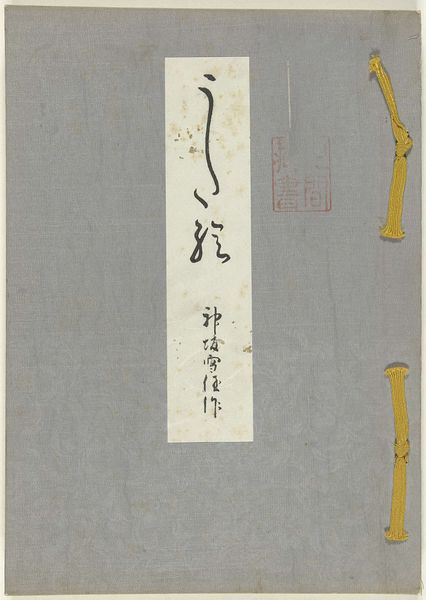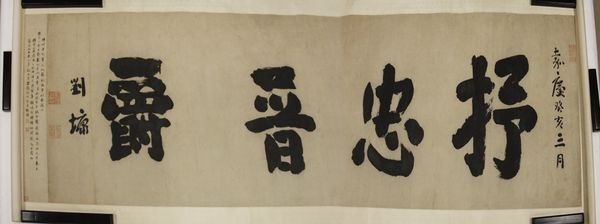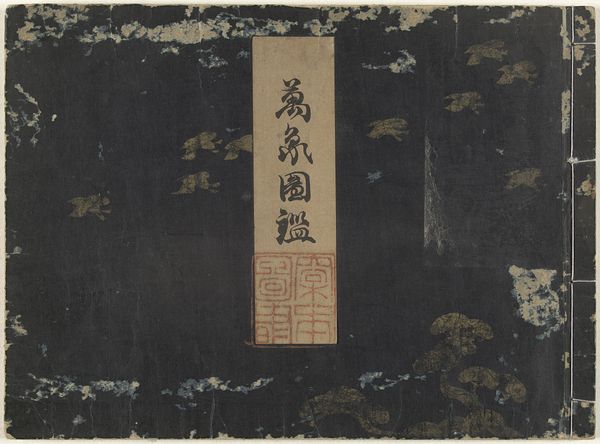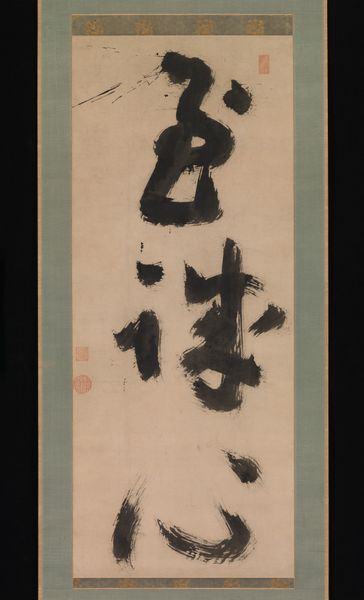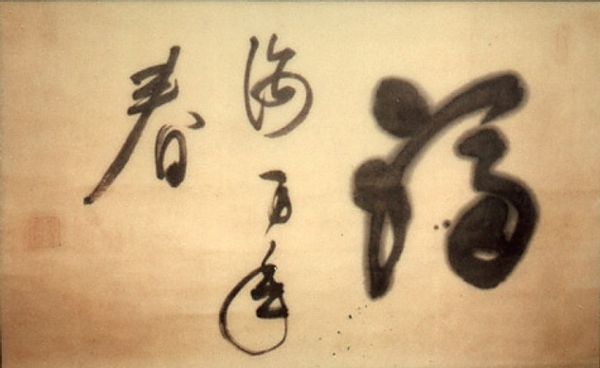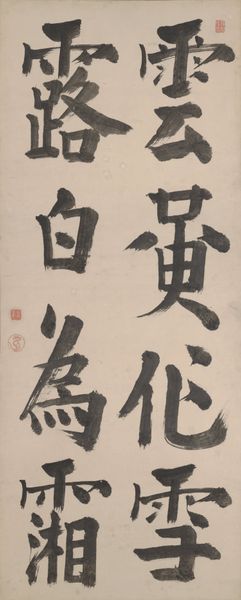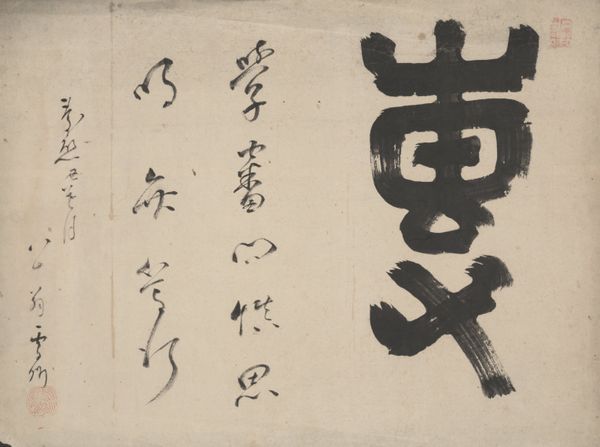
drawing, paper, ink-on-paper, ink
#
drawing
#
asian-art
#
paper
#
ink-on-paper
#
ink
#
calligraphy
Dimensions: 31 1/2 × 6 15/16 in. (80.01 × 17.62 cm) (image)57 9/16 × 7 13/16 in. (146.21 × 19.84 cm) (mount, without roller)
Copyright: Public Domain
Editor: Here we have "Qin and Calligraphy - Delights" by Yanagisawa Kien, created around the mid-18th century using ink on paper. It's striking how these bold, vertical characters dominate the visual space. How would you interpret this work in light of its historical context? Curator: This piece gives us insight into the literati culture of the time. The artist was clearly participating in, and contributing to, a long-standing tradition of scholarly pursuits. Note the strategic arrangement, and try to see past the pure characters. Ask yourself what the cultural purpose of the hanging scroll was? What social function did calligraphy fulfill? Editor: I see... So it's not just about the aesthetic value of the brushstrokes themselves, but about its societal role? Curator: Precisely. Consider that displaying calligraphy was a way to signal one's refinement and learning. Further, calligraphy scrolls were often exchanged among educated people. A skill, here exemplified with the "Qin," representing erudition, that allowed elites to network. What's fascinating is how this object became a kind of social currency. How would the rise of printed material influence the meaning and value associated with the singular handmade artistic act of the painter and/or calligrapher? Editor: That's a helpful connection; seeing how societal values are embedded within it transforms how I appreciate the artwork. Curator: Absolutely. Thinking about how art is a product and producer of social structures enhances our appreciation, doesn't it?
Comments
minneapolisinstituteofart almost 2 years ago
⋮
The Chinese literati favored four accomplishments (Jap. kinki shoga) as elegant pastimes: playing the qin (seven-stringed lute), playing Chinese chess, practicing calligraphy, and painting. This theme was also taken on by Japanese literati artists, and the words kinki shoga were symbolically equated with the nature of a scholar. Yanagisawa Kien (1704–1758) was a calligrapher and painter who experimented with heterodox themes and styles. A pioneer of the Japanese literati movement, his works express an eccentric style found in Chinese Qing dynasty (1644–1912) individualists from around the same time. Instead of repeating the common formula of qin-chess-calligraphy-painting, he chooses to dismiss chess and painting and replace them with an expression of joy that the remaining two pastimes brought. His calligraphy, executed in clerical script, continues with the classical theme by articulating the feeling: “Qin, Calligraphy, and One-hundred Delights.”琴書百樂
Join the conversation
Join millions of artists and users on Artera today and experience the ultimate creative platform.
